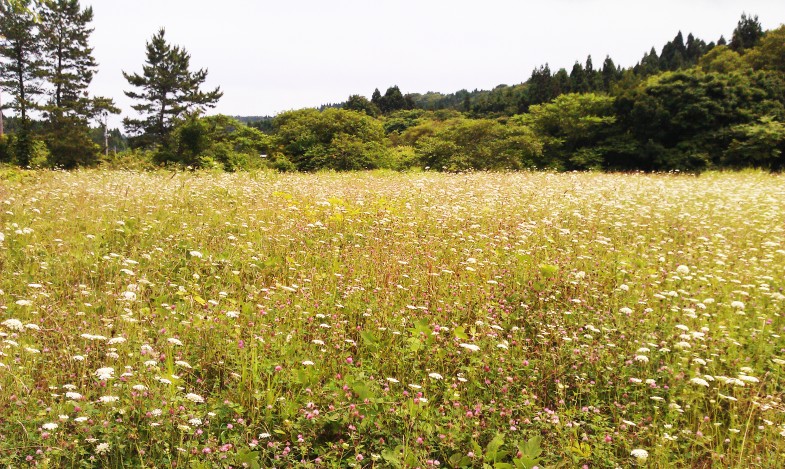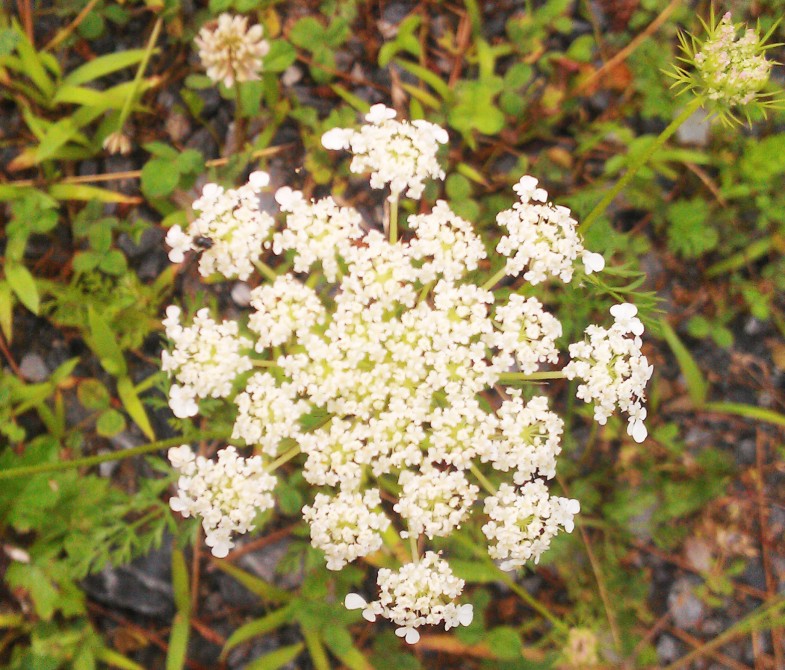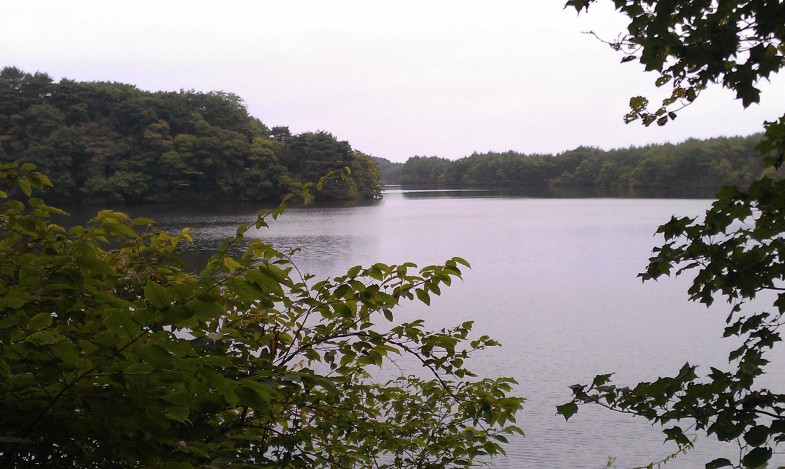
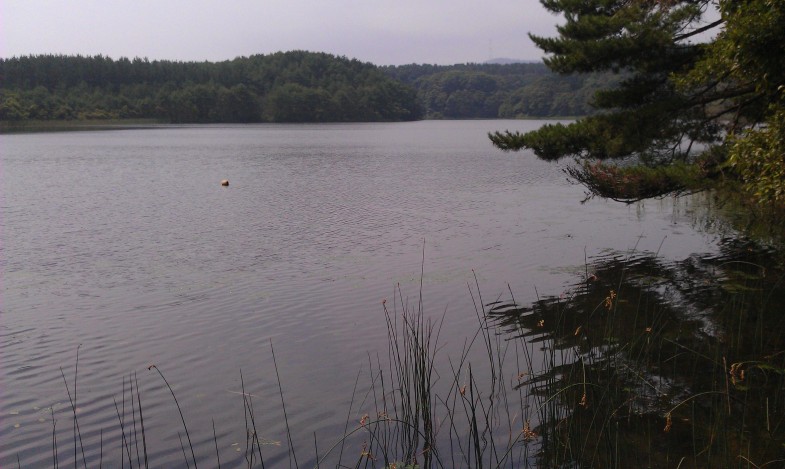
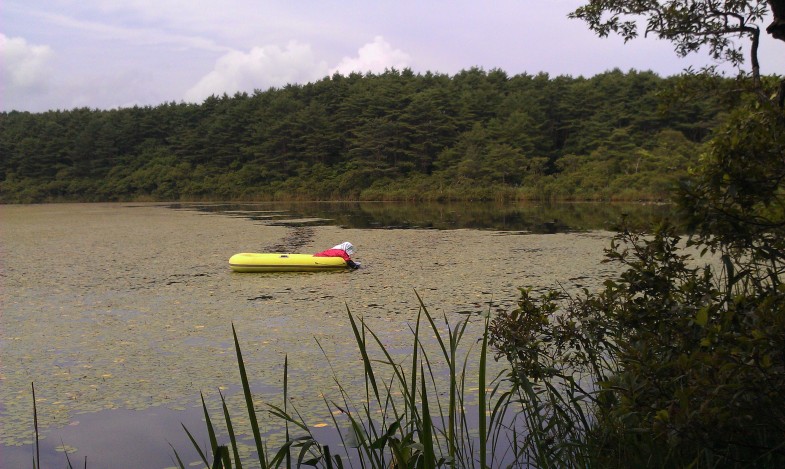
"Smilšu kāpu ezers" ir smilšaina pludmale, kas vēja ietekmē veido viļņojumus.、Tie ir saldūdens purvi, kas dabiski veidojas, upēm ietekot ieplakās (Sagata, Niigatas prefektūra u.c.)。Zemūdens smiltis okeāna straumju un viļņu ietekmē uzbriest kā uzbērums, bloķējot izeju.、(Tas veidojas savādāk nekā iesāļa ūdens ezeri, piemēram, Saromas ezers un Hačirogata)。Pats kāpu ezers ir vērtīga vienība, kas tiek zaudēta visā pasaulē.、Bioloģiski vērtīgas vides veidošana。
Sand dune lake is a natural freshwater pond in a sandhill. It was shaped by wind. The wind had been carring sand and formed ups and downs, and then water stream into hollow places. It is not only very valuable existence itself in the world but also it gives important environment for biodeversity that’s being lost.
Higašidori ciematā、Ir daudz lielu un mazu "smilšu kāpu ezeru" (tikai 13 nosaukti purvi)。Higashidori ciems, Sarugamori smilšu kāpas un Back Wetlands ir izvēlēti kā viens no Japānas 500 nozīmīgajiem mitrājiem (patiesībā var teikt, ka lielākā daļa Šimokitas pussalas ir izvēlēta šādā veidā).。Šī pērtiķa ga meža smilšu kāpa (platums 1-2 km)、"Shimokita smilšu kāpas" ir smilšu kāpu (kopējais garums 17 km) un smilšu kāpu kombinācija, kas iet nedaudz iekšzemē.、Lai gan tā ir maz zināma, patiesībā tā ir lielākā smilšu kāpa Japānā.。Iemesls, kāpēc tas nav zināms, ir、Smilšu kāpas ieskauj vēja un smilšu aizsargmeži.、Lietas, kuras cilvēkiem ir grūti saskatīt、Lielāko daļu no tā izmanto Aizsardzības ministrija un citi ballistisko izmēģinājumu poligoniem utt.、Tas ir tāpēc, ka ieeja ir aizliegta.。
There are many dune lakes in Higashi-dori village. Named lakes are minimum 13s. Salugamori sandhill (1~2 km width, 17 km length) include the rear wetland in this village has selected one of 500 of the important wetland of Japan (Actually most of Shimokita peninsula is selected also). Additionaly, Shimokita sandhill (includ this Salugamori sandhill with the next ones) is really the biggest one in Japan. However almost all japanese don’t know of it. One of the reason is that this place is hidden from the roads by pine grove for protect the wind and the sand. The other one, here is off limited, because this ares has been useing for test site of trajectory of Ministry of Defence (MD).
Pats kāpu ezers atrodas ārpus Aizsardzības ministrijas teritorijas.、Šķiet, ka daži no tiem tiek izmantoti arī makšķerēšanai.。Taču arī vēja un smilšu aizsardzībai izmantotie priežu meži kļuvuši lielāki.、Daudzi ceļi, kas ved uz purvu, pazūd.。Arī šeit turpinās iedzīvotāju skaita samazināšanās un novecošana.、Pašlaik netiek veikti nekādi akadēmiskie pētījumi.。
These are out of the area of MD. A few lakes of it look as useing fishery sometimes but not often. Most of the roads to go there is being lost by growing thickly weeds and pine grove. Creasing depopulation and ageing there. Academic reserch stopped now.
Fotogrāfijas ir no augšas uz leju (sakārtotas no ziemeļiem uz dienvidiem)、Onuma、Sakyo purvs、Aranuma。Izmērs un dziļums nedaudz atšķiras, taču tie visi ir dabiskā stāvoklī.。Onuma ir liela garnele、Sakyo-numa ir slavena ar Aegagropila Linnaei.、Kas notiek tagad, kad nav veikti pētījumi?。Aranuma dziļums ir 1-2 m.、Brasenia schreberi tiek novākta.。
Photo:(above) O-numa. Small river prawn lives in. (midlle) Sakyo-numa. Sakyo-numa is famous for “Hime-malimo” (small moss ball), but how is it now? (bottom) An old woman was picking “Jun-sai” (the water shield) from the water at lake Ala-numa. ※numa means lake or pond. All of dune lakes are Nature.
